|  | Algae, E. coli, & Closures: Wrapping Up the 2024 Season |
| This is the final week of summer beach monitoring, unofficially ending the summer recreational season. Thank you for following along with us for the past 16 weeks of Weekly Water Watch. Before we turn our focus toward fall, let’s look back at another year of unprecedented Iowa beach advisories. While the state’s prolonged drought subsided in late spring, flash flooding contributed to an ‘epic’ uptick of agricultural runoff and beach advisories. In the 16-week monitoring period for 39 public beaches, Iowa DNR issued 15 beach advisories for microcystin and 134 for E. coli. In the same period, the U.S. Army Corps of Engineers Rock Island District issued 12 advisories for E. coli on the six beaches it monitors on Iowa reservoirs (Saylorville, Red Rock, and Coralville). The Corps released 3 new advisories this week at North Overlook Beach, West Overlook Beach, and the Sugar Bottom Campground. Beed’s Lake had the most advisories for E. coli – 13 of the 16 of the summer monitoring period. Since IEC began tracking E. coli advisories in 2014, 2024 had the second highest number of advisories behind 2015. Along the same line, Lake Darling had the worst overall beach health with 9 E. coli advisories and 8 microcystin advisories. Let’s put this in context: This past summer, the Paris Olympic Committee experienced a massive challenge of purifying the Seine River to protect Olympians from pollution and related ailments. What was the result? Some events were cancelled, several participants declined to compete in open water events, and other participants fell ill. In August, the Bleeding Heartland published an article comparing this level of contamination to that in Iowa. The highest recorded concentration of E.coli concentration in the Seine was an approximate 649mpn/100mL on July 31. That same week in Iowa, our highest concentration of E.coli was approximately 24,000mpn/100mL recorded at Hickory Grove Park. |
| |
|
| |  | | 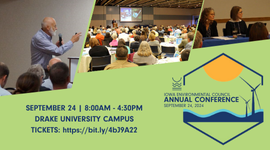 | Register for Conference & ProH2O | Join us for two educational events this month! IEC Annual Conference on September 24 will feature 50+ national and local speakers addressing today’s most urgent environmental topics, including: - Cancer and the Environment
- Renewables and Myth-Busting
- An Introduction to Environmental Justice
- Solutions to Nitrate Pollution
- Climate Change Impact on Mental Health
- and more!
See the entire session and speaker line-up here. The keynote is Dr. Benjamin Pauli, Associate Professor of Social Science at Kettering University in Flint, Michigan. Not only is Dr. Pauli a researcher who has authored a book about the Flint water crisis, he and his family lived in Flint as the crisis unfolded. His compelling keynote will dig into environmental justice and democracy in Flint. Two days later, we invite you to attend IEC's 11th annual PRO H2O, celebrating the work we do together for clean water in Iowa. We will connect and network as the sun sets on the terrace of the Iowa State Historical Building in Des Moines with cocktails and appetizers, and some special surprises. Celebrate the IEC's work to improve our waterways across the state, and connect with fellow water advocates. | | |
|
|
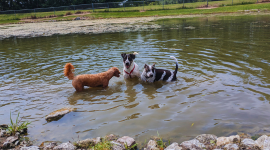 | Iowa Water Watchdog Recap This summer, IEC launched our newest education and awareness campaign, “Iowa Water Watchdogs.” The goal of the campaign is to raise awareness about the risks of cyanotoxin poisoning in dogs that come into contact with harmful algae blooms in Iowa’s natural waterways. Cyanobacteria, also known as blue-green algae, can bloom rapidly in lakes, ponds, and slow-moving streams after periods of warm weather and excessive fertilizer runoff. These harmful algae blooms (HAB) can produce cyanotoxins, such as microcystin, that are harmful to pets and human health. Cyanotoxins such as microcystin can cause flu-like symptoms in humans that ingest or inhale them or rashes from contact with the skin. Dogs are at a greater risk of cyanotoxin poisoning because of their behaviors in the water, including swimming, drinking, and licking water and scum off their fur after being in the water. To learn more about the risks of algal blooms, symptoms of cyanotoxins, and how to keep your dog safe from poisoning, check out our pet safety fact sheet and visit our Iowa Water Watchdog website for more information. Thank you to all of those who submitted photos and donated to the campaign! | |
|
|
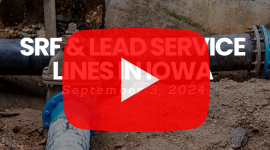 | SRF & LSL Webinar Recording On September 3, IEC and community partners from the Department of Natural Resources, Des Moines Water Works, and Council Bluffs Water Works presented Iowa's State Revolving Funds (SRF) in action. This webinar included background on the SRF, information about increased funding made available through the Bipartisan Infrastructure Law, examples of financing water assets in communities, updates on community lead service line replacement projects, and more. The SRF is one of Iowa’s primary resources for financing drinking water infrastructure and water quality improvement projects. Between the Clean Water Loan Program and Drinking Water Loan Program, communities, watershed groups, and public water systems can access low-interest loans to finance projects that range from wastewater treatment to drinking water treatment upgrades, stormwater management, source water protection, and more. Iowa SRF is providing LSLR loans at 0% interest. While 49% of SRF loans from the BIL will be forgiven for disadvantaged communities, there is still 51% that will need to be paid by the utility or the homeowner. Learn more about State Revolving Funds on our new fact sheet. |
|
|
| | 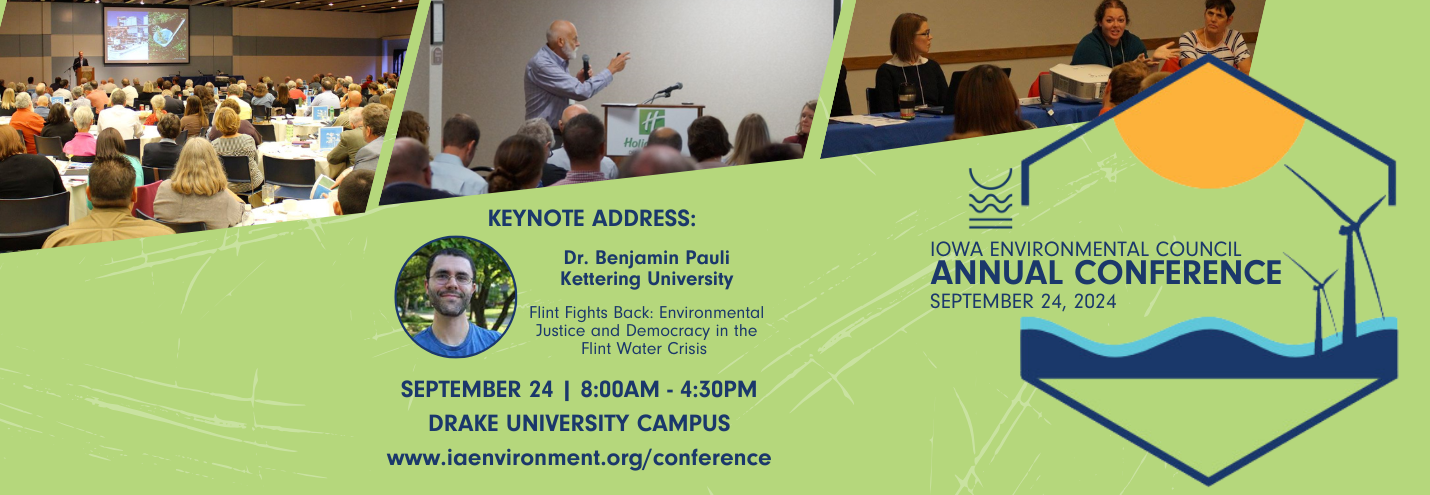 | | What's new in Iowa's water news: |
|
|
| | | 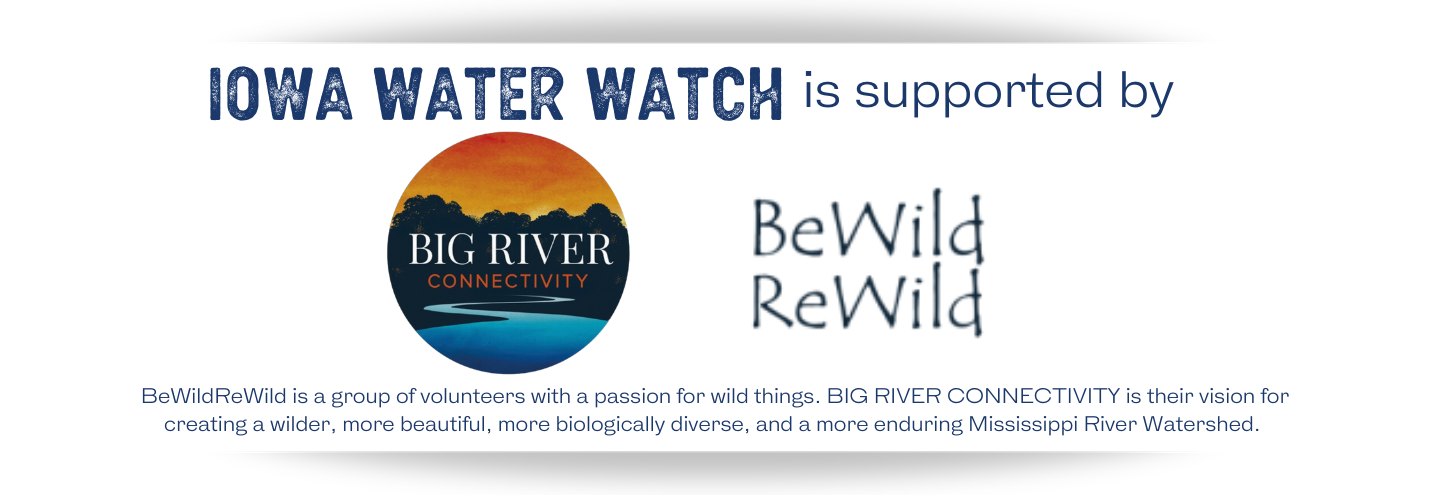 | | | Iowa Environmental Council
505 Fifth Ave., Suite 850
Des Moines, Iowa 50309-2317
515-244-1194 | iecmail@iaenvironment.org |
|
|
|
|
|